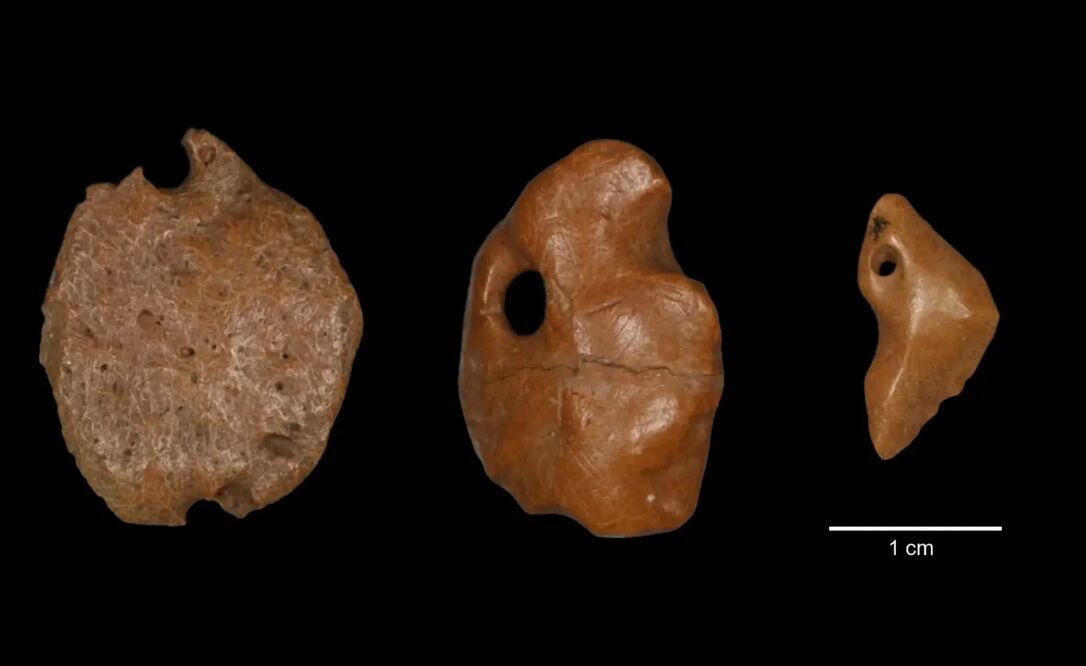Jewelry made from the bones of a giant sloth 25,000 years ago found in Brazil (photo)

Archaeologists have discovered three pendants made from the bone material of an extinct giant sloth in a rocky shelter in central Brazil. The pendants are believed to be between 25,000 and 27,000 years old, making them the oldest known personal jewelry in America and the only ones made from giant sloth bone in the archaeological record.
The new study shows that humans lived in South America at the same time as the extinct giant sloths, supporting evidence that humans arrived in America earlier than previously thought.

Recent research has cast doubt on the notion that humans migrated to the Americas approximately 13,000 years ago by crossing a land bridge from Siberia to Alaska.
Read also: Giant "doomsday" fish spotted in Taiwan: what it means (photos and video)
The jewelry was found about 30 years ago in a rock shelter called Santa Elena in central Brazil. The new study is the first to thoroughly analyze them and rule out the possibility that humans found and carved them thousands of years after the animals died.
The pendants were among thousands of osteoderms, hard bone deposits that form on the skin of some animals. The osteoderms belonged to a species of giant sloth known as Glossotherium phoenesis, which weighed about 600 kilograms and had long clawed feet for digging.
To find out how the pendants were created and altered by human hands, the researchers who discovered them analyzed them using a variety of methods and experiments. They found that the osteoderms were polished and had holes drilled into them, indicating that they were used for personal adornment, probably as necklaces or earrings. According to the study, published in the journal Proceedings of the Royal Society B, the holes were not caused by natural abrasion or predators.
Read also: Archaeologists unearth a collection of gold and steatite jewelry in Egypt (photo)
The team of researchers from Brazil, France and the United States said their analysis shows that this handmade work was done within days or a few years after the animals died and before the materials were fossilized. The researchers also ruled out natural abrasion and other things that could explain the shapes and holes.
The giant ground sloths reached 13 feet in length, weighed more than a thousand pounds, and were equivalent in size to an Indian elephant. According to the report, it walked on all fours and was one of the largest creatures in South America.
As a reminder, a significant treasure from the time of the Roman emperors of the first and second centuries AD was discovered in Germany. It was found in the city of Augsburg, located in southwestern Bavaria.
If you want to get the latest news about the war and events in Ukraine, subscribe to our Telegram channel!
